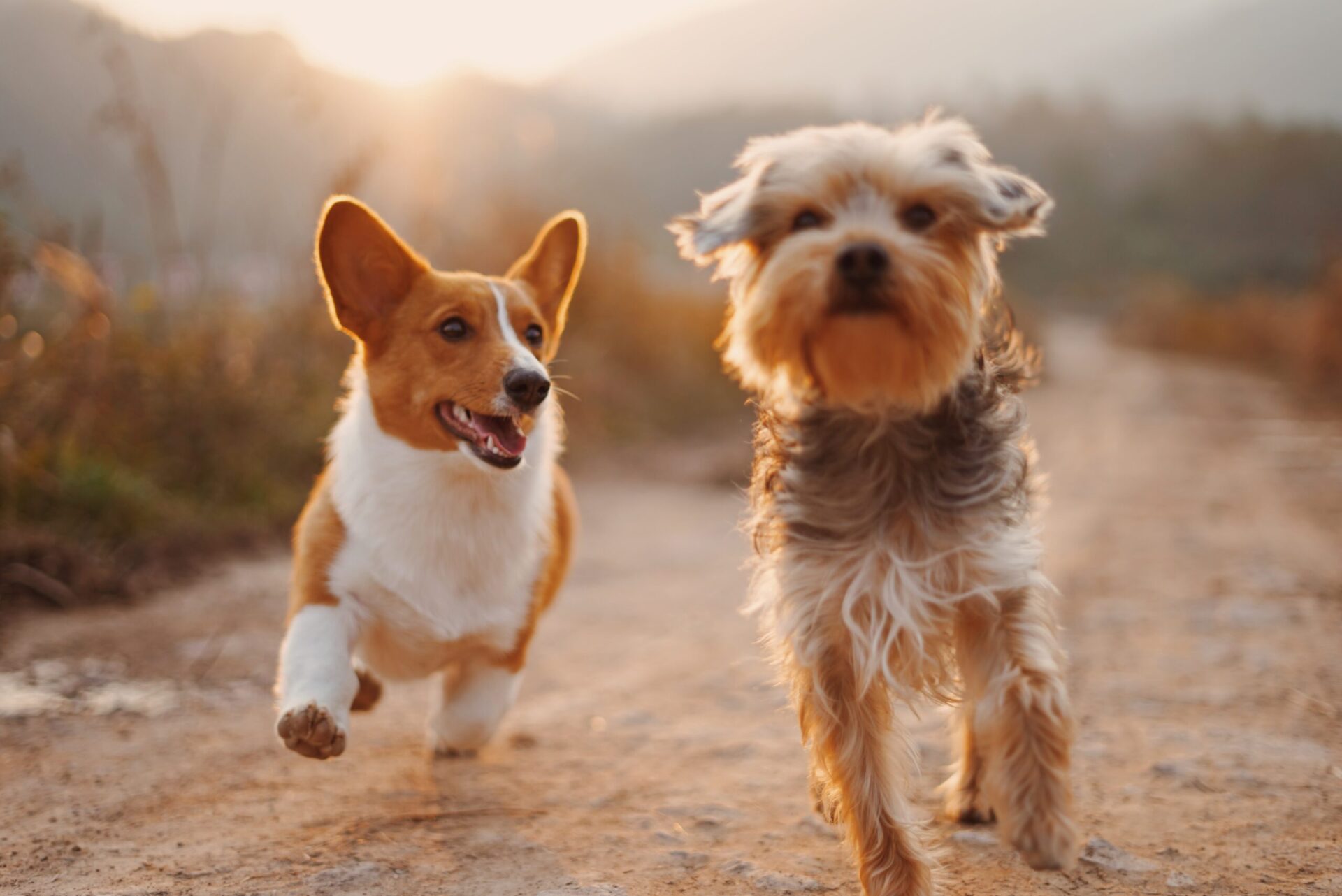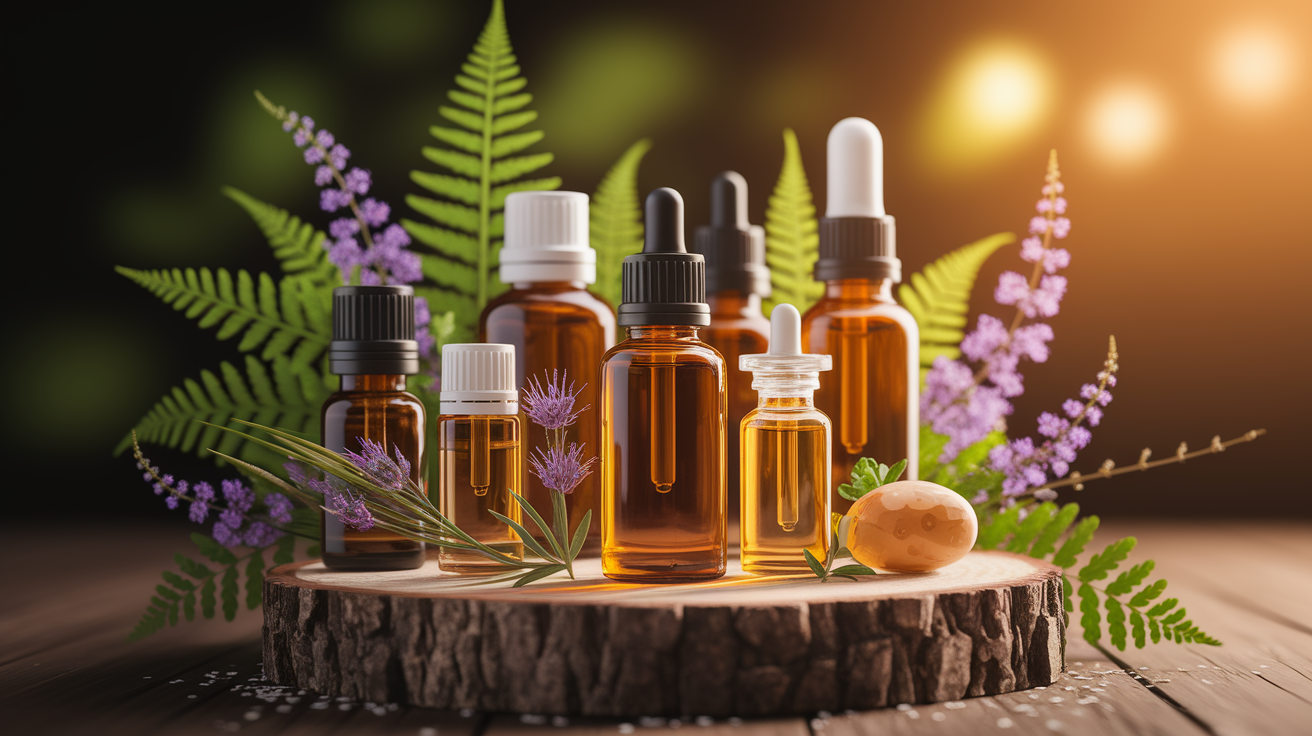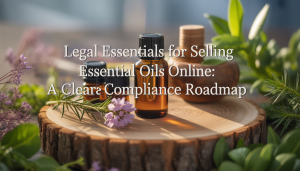Pawsitive Aromatherapy: Your Dog’s Essential Oil Starter Guide
I’m so excited to share my decade-long journey with essential oils and how they can benefit our furry friends. As someone who’s witnessed the gentle power of these plant extracts firsthand, I understand your interest in bringing these natural solutions to your dog’s wellness routine.
But I can’t stress this enough—applying essential oils to dogs requires special care and knowledge. Our canine companions process these concentrated botanical treasures very differently than we do! In this guide, I’ll walk you through each step of safely introducing essential oils to your dog’s life, from selecting the right oils to proper application techniques, all while keeping your pup’s unique needs at the forefront.
Understanding Canine Aromatherapy Basics
Before we discuss application methods, it’s crucial to understand why dogs interact with essential oils differently than humans do. Respecting these differences is the foundation of safe practice.
Why Dogs Are Different
Dogs have a much more sensitive sense of smell—up to 100,000 times more powerful than ours! Their skin is thinner than human skin, allowing for quicker absorption of topical substances. Most importantly, their bodies metabolize essential oil compounds differently. According to the American Kennel Club, a dog’s liver cannot efficiently process certain compounds found in essential oils that are perfectly safe for humans. This is why what seems like a mild concentration can potentially overwhelm your pup’s system.
Benefits vs. Potential Hazards
When used properly, essential oils may help address issues like mild anxiety (during thunderstorms or travel), repel insects, soothe skin irritation, or simply create a pleasant environment for both you and your dog. However, the risks of improper use include skin irritation, respiratory distress, liver damage, and even neurological problems. This is why proper dilution and application are non-negotiable aspects of canine aromatherapy.
Choosing the Right Essential Oils
Not all essential oils are created equal when it comes to canine safety. Here’s my guidance on which oils tend to be better tolerated and which ones should never make it into your dog’s aromatherapy routine.
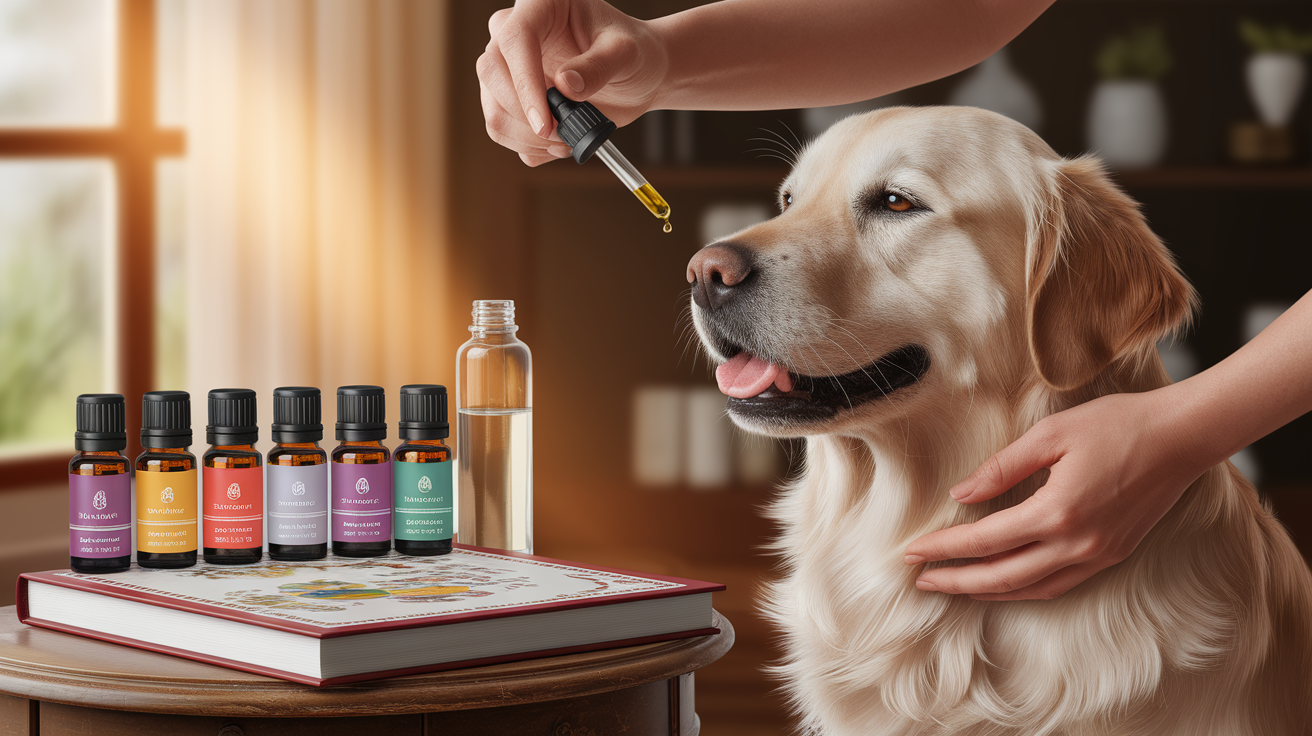
Generally Safe Oils
These oils, when properly diluted and applied, tend to be well-tolerated by most dogs:
- Lavender: Perhaps the gentlest option for dogs, known for its calming properties during stressful situations like thunderstorms or separation anxiety.
- Chamomile: Wonderful for dogs with irritated skin or those who need help relaxing.
- Frankincense: Often used for its grounding properties and potential immune support.
- Cedarwood: Many holistic practitioners recommend this for its pleasant woody scent and potential to repel insects naturally.
Oils to Steer Clear Of
According to the Pet Poison Helpline, these oils pose significant risks to dogs and should be avoided:
- Tea Tree Oil: Particularly toxic in undiluted form, can cause severe neurological symptoms.
- Wintergreen: Contains methyl salicylates that dogs cannot metabolize safely.
- Clove: Too intense for canine systems and can cause liver problems.
- Citrus oils: Like lemon, orange, and grapefruit can cause vomiting, drooling, and depression in high concentrations.
- Cinnamon: May cause irritation to mucous membranes and skin.
- Pennyroyal: Extremely toxic to dogs’ liver function.
Dilution Ratios and Carrier Oils
This is where many well-meaning pet parents make mistakes. Essential oils must never be applied “neat” (undiluted) to your dog. Let me share the dilution practices I’ve learned to trust over the years.
Recommended Dilution Guidelines
For dogs, essential oils should be significantly more diluted than formulations for humans:
- Puppies/small dogs (under 20 lbs): 0.25–0.5% dilution (1–2 drops per 4 tablespoons/60mL of carrier oil)
- Medium dogs (20-50 lbs): 0.5–1% dilution (3-6 drops per 4 tablespoons/60mL of carrier oil)
- Adult/large dogs (over 50 lbs): 1–2% dilution maximum (6-12 drops per 4 tablespoons/60mL of carrier oil)
Remember, when it comes to essential oils and dogs, less is always more! Start with the most minimal dilution and observe how your dog responds.
Best Carrier Oils for Dogs
Carrier oils not only dilute essential oils to safe levels but also help them absorb properly into your dog’s skin. My favorites include:
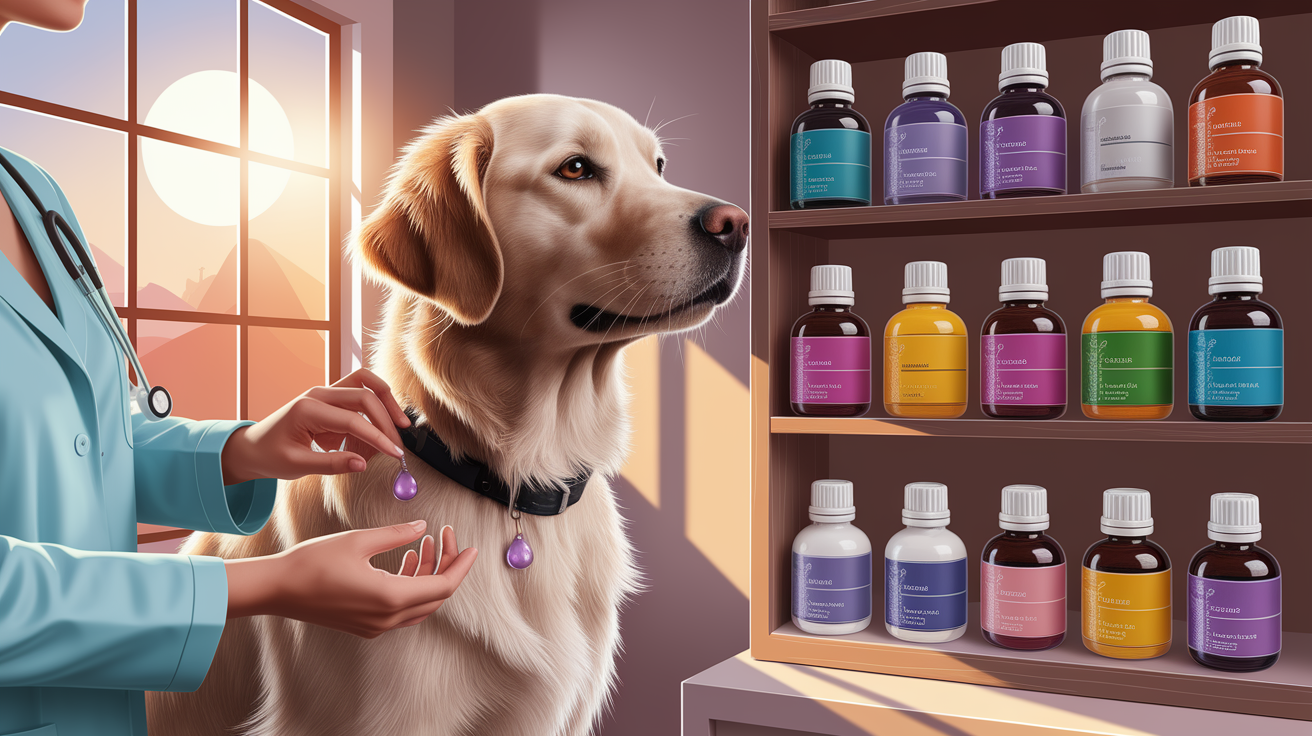
- Fractionated coconut oil: Absorbs easily, doesn’t leave a greasy residue, and has a long shelf life.
- Sweet almond oil: Rich in vitamin E and gentle on skin (avoid if your dog has nut sensitivities).
- Jojoba oil: Closely resembles the natural oils in skin and rarely causes allergic reactions.
- Olive oil: A common household option that works well, though it’s a bit heavier.
Application Methods Explained
Now that you understand the foundations of safety, let’s explore how actually to apply these diluted essential oils to your furry friend.
Topical Spot-On Application
This is one of the most direct methods of application:
- Step 1: Clean and dry a small area, preferably between the shoulder blades where your dog cannot lick.
- Step 2: Apply a small amount (a few drops) of your properly diluted oil mixture.
- Step 3: Gently massage the oil into the area, being careful not to oversaturate the fur.
- Step 4: Monitor your dog for 30 minutes after application for any signs of discomfort.
Safe Diffusion Practices
Diffusing is often the gentlest introduction to essential oils for dogs:
- Use a water-based diffuser, never heat-based models which can alter the oil’s chemistry.
- Start with just 1-2 drops of oil in your diffuser.
- Limit diffusion sessions to 10-15 minutes with proper ventilation.
- Always give your dog an “escape route” to leave the room if desired.
- Never diffuse in enclosed spaces like crates.
Infused Collars or Bandanas
This is my favorite subtle method for anxious dogs:
- Place 1-2 drops of pre-diluted oil on a bandana or fabric collar.
- Allow the fabric to absorb the oil for 20 minutes before placing it on your dog.
- Replace or refresh every 1-2 days as the scent diminishes.
- This method allows your dog to move away if the scent becomes overwhelming.
Performing a Patch Test and Monitoring Reactions
Just like humans, dogs can have individual sensitivities to certain oils. A patch test is non-negotiable before beginning any essential oil regimen.
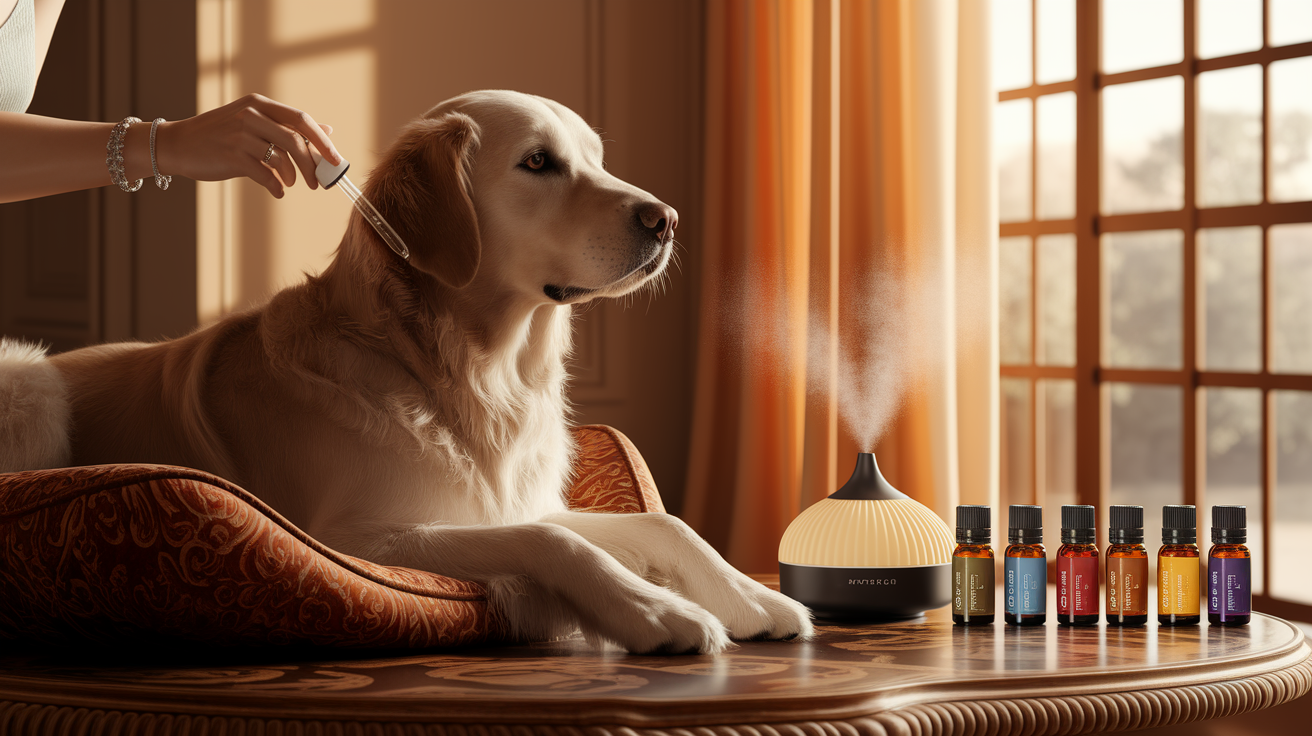
Step-by-Step Patch Test
Here’s how I conduct a proper patch test for my canine clients:
- Dilute the essential oil at half the strength you plan to use regularly.
- Apply a tiny drop (smaller than a pea) to an area with less fur, such as the inside of a back leg.
- Monitor the area for at least 24 hours, checking periodically for redness, swelling, or irritation.
- If your dog shows any signs of discomfort like excessive scratching, discontinue immediately and wash the area with mild soap and water.
Signs of Adverse Reactions
Watch carefully for these warning signs that your dog may be having a negative reaction:
- Excessive scratching, licking, or chewing at the application site
- Redness, swelling, or a rash
- Changes in behavior, lethargy, or seeming “off”
- Drooling, vomiting, or diarrhea
- Difficulty breathing, coughing, or wheezing
- Stumbling or lack of coordination
If you notice any of these symptoms, wash off the oil if possible and contact your veterinarian immediately.
Frequency, Dosage, and Safety Tips
Even with dog-safe oils, moderation is key to success. Let me share my guidelines on how often to use essential oils with your furry friend.
Application Schedule
- Topical application: No more than once daily, and ideally every other day to start.
- Diffusion: 10-15 minutes, up to twice daily, with several hours between sessions.
- Infused accessories: Can be worn for up to 6-8 hours, but remove at night.
I always recommend taking breaks from essential oil use—perhaps using oils for 3-4 days, then taking 2-3 days off—to prevent sensitization and allow your dog’s system to process the compounds fully.
Special Considerations
Some dogs need extra caution when it comes to essential oils:
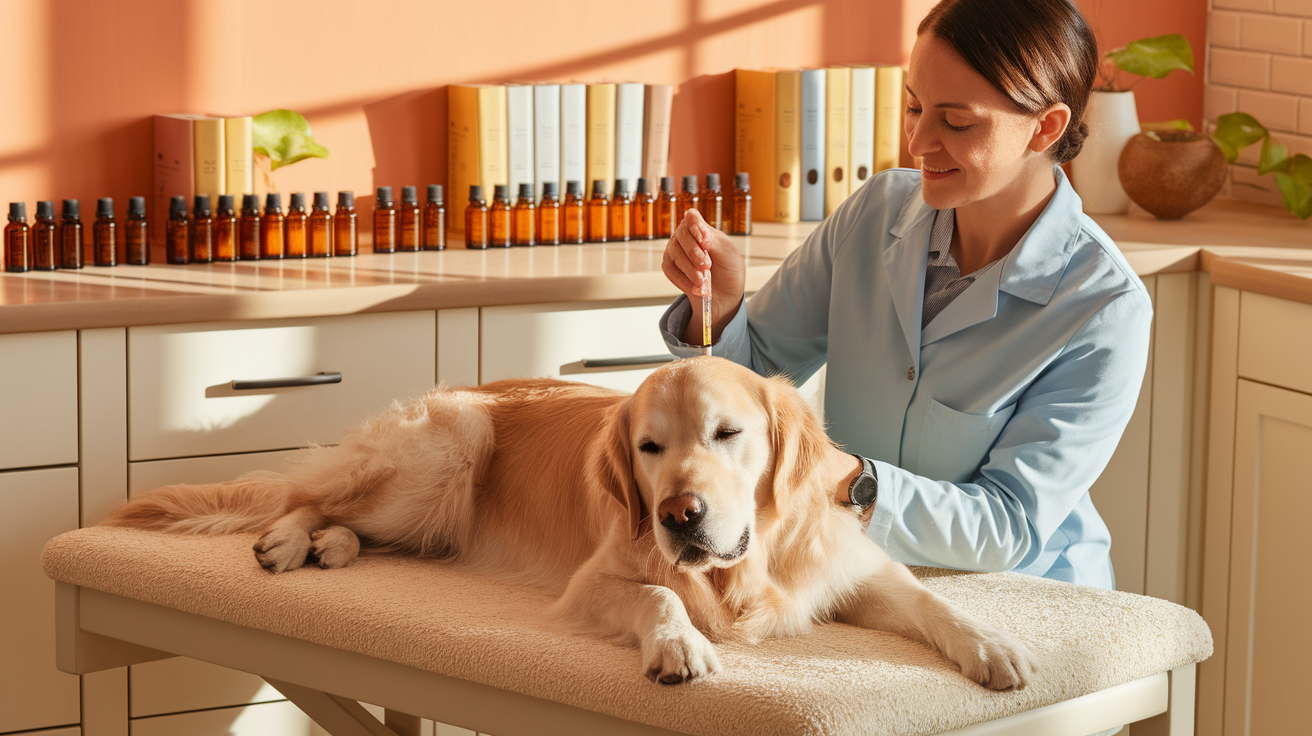
- Puppies under 10 weeks: Avoid crucial oils altogether.
- Senior dogs: Use half the typical dilution as their systems may be more sensitive.
- Pregnant or nursing dogs: Consult with a holistic veterinarian before use.
- Dogs with health conditions: Those with liver, kidney, or respiratory issues should only use essential oils under veterinary supervision, if at all.
- Epileptic dogs: Some oils may trigger seizures in sensitive individuals.
When to Consult Your Veterinarian
While I love sharing my knowledge about essential oils, I always emphasize that veterinary guidance should be your north star, especially if you’re new to using these potent plant extracts with your dog.
Key Vet Questions
Before starting any essential oil regimen, consider asking your veterinarian:
- “Given my dog’s breed, age, and health status, which essential oils (if any) would you recommend?”
- “Could any essential oils interact with medications my dog is taking?”
- “What dilution ratio would you suggest for my specific dog?”
- “What symptoms should I watch for that would indicate we should stop using oils?”
Regulatory and Label Reading
Not all essential oils are created equal. Here’s what to look for when purchasing:
- 100% pure essential oils (no synthetic fragrances)
- Proper botanical names listed
- Transparent sourcing information
- Look beyond marketing terms like “therapeutic grade” which aren’t regulated
- Oils in dark glass bottles to protect from degradation
Conclusion – Wagging Tails and Wholesome Scents: Next Steps in Canine Aromatherapy
If you’ve made it this far, you already show the care and attention that makes you a wonderful dog parent! Remember, the journey of introducing essential oils to your dog should be slow, mindful, and always prioritizing their comfort and safety. Start with just one oil at the most conservative dilution, perform a proper patch test, and observe your dog’s response before expanding your aromatherapy toolkit.
I recommend keeping a simple journal of which oils you use, how your dog responds, and any benefits you notice. This personal evidence becomes invaluable as you develop your own custom approach to canine aromatherapy. And please, never substitute essential oils for veterinary care when your dog is ill—these wonderful plant extracts work best as complementary supports to proper medical attention.
Essential oils can be a beautiful addition to your holistic approach to dog care if used with knowledge and respect. I’d love to hear about your experiences as you and your furry friend explore this aromatic journey together!


